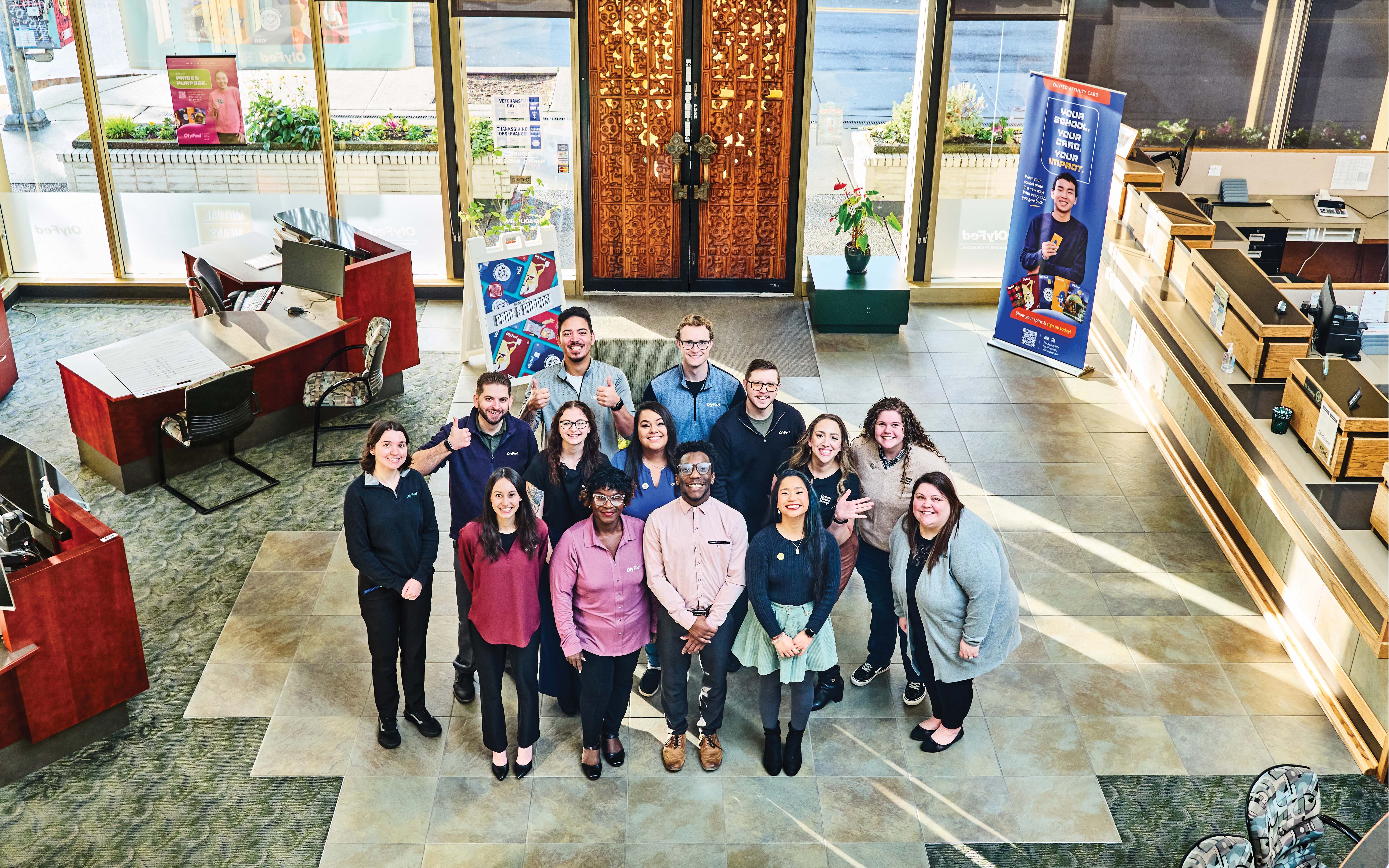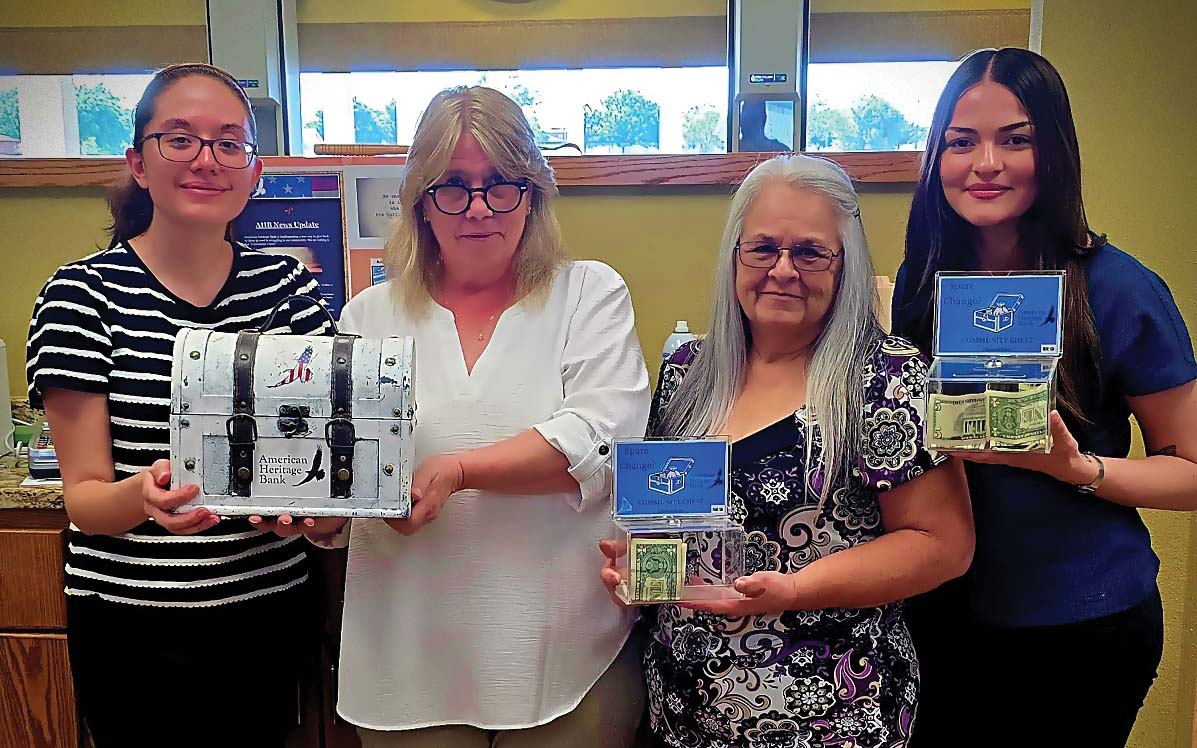Good leadership is about much more than one individual’s impact on the bottom line. It’s not even just about having the “soft skills” that make people want to work on your team. It’s about how effective leaders use these skills both internally and in the community to build a stronger bank. Here, community bankers and experts give insight into what this can look like.
What Makes a Leader Truly Great? Experts Weigh In
June 01, 2025 / By Roshan McArthur
Good leadership is about much more than one individual’s impact on the bottom line. It’s not even just about having the “soft skills” that make people want to work on your team. It’s about how effective leaders use these skills both internally and in the community to build a stronger bank. Here, community bankers and experts give insight into what this can look like.
When considering succession planning, it’s essential to identify who within the ranks of your community bank has the potential for a leadership position. But how do you spot—and then nurture—a potential leader?
Below, seasoned community bankers and other experts discuss the skills an effective leader needs and how they show up in the work environment.
1. Great leaders put people first
If there is one trait that everyone can get behind, it’s that the best leaders are highly relational and invested in their people.

“You can’t be a great leader if you don’t truly care about your teammates,” says Lindsay LaNore, ICBA’s chief learning and experience officer. Leaders, she believes, exhibit genuine care and interest in others.
This is an opinion that’s echoed by many community bankers. Justin Stewart, SVP of community banking at $677 million-asset Mission Valley Bank in Sun Valley, California, believes great leaders put others’ well-being first. “The ones I’ve had the privilege to work for view all stakeholders with equal importance,” he says.
Erik Howard, president of $5.4 billion-asset CFG Bank in Baltimore, agrees that this degree of care is essential, along with strong relational skills. “Great leaders foster meaningful relationships with their team, clients and community,” he says. “They invest in their team and create environments where people feel valued, supported and encouraged.”

John Creighton, CEO of High Plains Bank in Flagler, Colorado, says that the $414.5 million‑asset bank always looks for leaders who care passionately about their communities, customers and colleagues, and that this is a quality that helps banks endure.
“Leaders who care deeply about the welfare of others are able to muster the energy and creativity to figure out ways to address tough challenges in a way that accounts for the needs of all concerned,” he explains. “Compassion is the wellspring of resilience, and every organization needs resilient team members who are able to continually take on more leadership responsibilities.”
A strong culture nurtures future leaders at Mission Valley Bank
Culture is critical to fostering the talent of potential leaders, says Justin Stewart, SVP of community banking at Mission Valley Bank in Sun Valley, California.
“The culture of the organization has to [have a dominant focus on] taking care of its people, who are its most important asset,” he explains. “That means nurturing them and their development, not just professionally but personally as well.”
Stewart adds that culture is how work gets done at an organization and drives the behaviors of its people. “Those behaviors are what influence the decisions of those you aim to do business with,” he says.
Mission Valley Bank put its core values in an easy-to-remember acronym: A.C.C.E.P.T., which stands for accountability, character, culture, excellence, people and teamwork.
“The strongest cultures have a mission, vision and set of core values that all align with one another,” says Stewart.
2. They make community a top priority
Putting people first is critically important, but great community bank leaders go one step further. This care for others extends beyond their immediate teams and out into the broader community.
“If it weren’t for community banks, one out of three U.S. counties would not have access to financial services,” explains LaNore. “That’s a remarkable mission and can be a true game changer in a community or in the life of a customer.”
A successful community bank leader is motivated by the difference they can make in a community. “The community bankers I have admired always had a fire in their belly for having a meaningful impact on the community,” says Stewart. “This is harder to do at larger institutions whose impact is more broad and less concentrated in smaller areas, whether that be geographic or demographic.”
Howard believes a strong leader of a bank with a large presence in a specific region needs to be driven by relationships and informed by a deep knowledge of that region. Unlike at larger financial institutions where customers may not know their banking teams, “it’s important to prioritize your client relationships and build trust by understanding the unique needs of the client and taking on their goals as your own.”
In other words, a strong leader is invested in their local area. “When you are headquartered in and do a lot of business in a region,” says Howard, “you need to be committed to that community’s well-being by supporting the businesses in the region, developing initiatives to creatively give back and more.”
3. They lead with authenticity
The strongest leaders can create and nurture relationships across industries, generations and demographics. According to LaNore, this is especially true in community banks.
“In this relationship-based industry, a great leader understands that building a network through trust and empathy is key,” she says. “‘All talk’ isn’t going to work for anyone. You have to be willing to follow through on your promises, pay attention to details and truly get to know people.”
This authenticity means leading others by example. “Successful leaders walk the walk, embodying your company’s core values through everything you do,” says Jack Dwyer, CFG Bank’s CEO.

4. They listen and respond mindfully
Every leader must be accessible and adaptable to effectively support their team and clients, says Dwyer. That way, they can actively listen and respond to their clients and teams, showing that they value input and therefore fostering trust. Open communication like this also prevents small issues from snowballing into bigger ones.
“A key to being a successful leader is being a strong listener, where you are always open to feedback and ideas from everyone on your team, and you make yourself accessible to the entire organization,” says Dwyer.
For example, CFG Bank recently moved into a new headquarters. During the planning process for that building, CFG leadership gathered feedback from the full team. With that information, leaders designed an office building tailored to the staff’s needs and preferences.
“As a result, we now work in one of the more unique office spaces we have ever seen,” Dwyer says, adding that the new space was designed to foster creativity, energy and an entrepreneurial spirit.
5. They value education
Successful leaders know that learning is a lifelong activity.
“Successful leaders are curious and always seeking innovative solutions rather than settling for the obvious solution,” says Dwyer. “They embrace creativity to deliver the best result.”
But they are also teachers, LaNore says, with the ability to simplify complex subjects and help others who may need a little extra support in completing a task or understanding the job they need to do.
“Be a teacher,” says LaNore. “Draw out the important keys to completion. But through it all, make it fun!”
At ICBA LIVE 2025, keynote speaker Rohit Bhargava talked about “non-obvious thinking,” or the art of seeing what other people miss. A successful leader is observant, as well as being open to new ideas and ways of thinking. “That’s a game-changing trait for a leader,” says LaNore, “to have the ability to question and seek out the non-obvious elements of a problem or task.”
Whether you call it visionary or thinking outside the box, it’s an essential quality for great leadership.
The importance of leading by example
CFG Bank in Baltimore cultivates leadership in its employees through leading by example, says CEO Jack Dwyer.
“People learn and develop traits when they see others do and act in that way,” he explains. “So, by walking the walk, our team sees how leaders think outside the box to creatively problem solve, how leaders listen and implement change based on employee feedback, how leaders are invested in their team, supporting and encouraging their success.”
A robust mentoring program also helps build the succession pipeline.
“Leaders should take note of high-potential team members and connect them with potential senior mentors within the company to help foster that potential,” Dwyer adds.
CFG Bank aims to be creative about fostering employee growth. It goes beyond mentoring, implementing external education opportunities or offering additional responsibilities like leading a project or taskforce.
“When you give people opportunity, you’re able to see their potential,” Dwyer says, “and they often rise to that potential.”
6. They make thoughtful but efficient decisions
In addition to compassion and great communication skills, leadership requires good old-fashioned grit. Great leaders weigh their options carefully. They ask for input from their teams. But when they make decisions, they act decisively.
“There are projects and efforts that make us take pause or trigger nerves,” says LaNore. “A leader doesn’t let that hold them back, recognizing that progress requires action. They have a willingness to say ‘go.’”
7. They lift others up
If leaders are compassionate, responsive and attentive, they will also give opportunities to others by delegating and giving them a chance to voice their opinions. In other words, a successful leader is always looking for ways to elevate those around them.
“Some are born leaders, and others are shaped into one by their own experiences,” says Stewart of Mission Valley. “The latter is how it happened for me. I worked for some great leaders that I admired and who inspired me. They lit the spark. I think it just started to manifest naturally from there as my enthusiasm for helping lift up those around me grew.”
LaNore agrees. “A great leader gives others opportunities—mini, small or big,” she says. “Leaders are constantly seeking out ways to give others those opportunities. For example, at our regular team meetings, we rotate the teammate who will be the moderator for that day. This gives everyone an opportunity to embrace their own leadership skills, ask questions and enrich the team culture.”
While they propel their teams forward, successful leaders are cheerleaders. They have enough emotional intelligence to read the room, figure out what is needed and motivate their teams, even when circumstances are far from easy.
“The ability to stay positive even in the face of a challenge is essential to leadership,” LaNore adds. “Limited progress happens when we’re stuck in the negative. A great leader sees the opportunities and gets others to see them as well.”
Tools for learning and growth
Learning can take place both informally and formally. Easy, often free options include reading a new article, listening to a podcast or starting a new leadership book. Our instinct is to share our expertise, and because of this, learning opportunities are all around us.
ICBA Education also offers countless opportunities for community bankers to learn and hone their leadership skills. The online library of on-demand courses—available at a cost to individuals or by bank subscription—is chock-full of learning opportunities. Examples of potential courses can be found at icba.org/education.
ICBA’s Professional Development Planner (icba.org/pdp) is another invaluable resource. New features were recently added to the tool, which is available by annual subscription to community banks.
Subscribe now
Sign up for the Independent Banker newsletter to receive twice-monthly emails about new issues and must-read content you might have missed.
Sponsored Content
Featured Webinars
Join ICBA Community
Interested in discussing this and other topics? Network with and learn from your peers with the app designed for community bankers.
Subscribe Today
Sign up for Independent Banker eNews to receive twice-monthly emails that alert you when a new issue drops and highlight must-read content you might have missed.
News Watch Today

Join the Conversation with ICBA Community
ICBA Community is an online platform led by community bankers to foster connections, collaborations, and discussions on industry news, best practices, and regulations, while promoting networking, mentorship, and member feedback to guide future initiatives.













